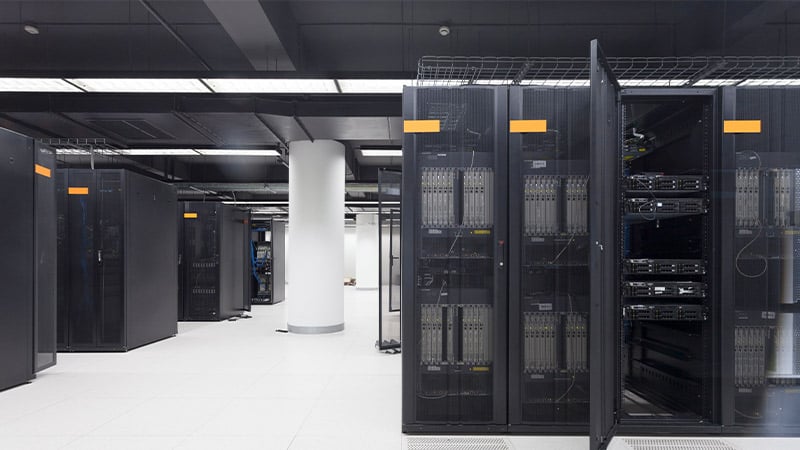Vertiv trends forecast sees intense focus on AI enablement and energy management
Columbus, Ohio [November 20, 2023] – Intense, urgent demand for artificial intelligence (AI) capabilities – and the dueling pressure to reduce energy consumption, costs and greenhouse gas emissions – loom large over the data center industry heading into 2024. The proliferation of AI (as Vertiv predicted two years ago) along with the infrastructure and sustainability challenges inherent in AI-capable computing can be felt across the industry and throughout the 2024 data center trends forecast from Vertiv (NYSE: VRT), a global provider of critical digital infrastructure and continuity solutions.
“AI and its downstream impact on data center densities and power demands have become the dominant storylines in our industry,” said Vertiv CEO Giordano (Gio) Albertazzi. “Finding ways to help customers both support the demand for AI and reduce energy consumption and greenhouse gas emissions is a significant challenge requiring new collaborations between data centers, chip and server manufacturers, and infrastructure providers.”
These are the trends Vertiv’s experts expect to dominate the data center ecosystem in 2024:
- AI sets the terms for new builds and retrofits: Surging demand for artificial intelligence across applications is pressuring organizations to make significant changes to their operations. Legacy facilities are ill-equipped to support widespread implementation of the high-density computing required for AI, with many lacking the required infrastructure for liquid cooling. In the coming year, more and more organizations are going to realize half-measures are insufficient and opt instead for new construction – increasingly featuring prefabricated modular solutions that shorten deployment timelines – or large-scale retrofits that fundamentally alter their power and cooling infrastructure. Such significant changes present opportunities to implement more eco-friendly technologies and practices, including liquid cooling for AI servers, applied in concert with air cooled thermal management to support the entire data center space.
- Expanding the search for energy storage alternatives: New energy storage technologies and approaches have shown the ability to intelligently integrate with the grid and deliver on a pressing objective – reducing generator starts. Battery energy storage systems (BESS) support extended runtime demands by shifting the load as necessary and for longer durations and can integrate seamlessly with alternative energy sources, such as solar or fuel cells. This minimizes generator use and reduces their environmental impact. BESS installations will be more common in 2024, eventually evolving to fit “bring your own power” (BYOP) models and delivering the capacity, reliability and cost-effectiveness needed to support AI-driven demand.
- Enterprises prioritize flexibility: While cloud and colocation providers aggressively pursue new deployments to meet demand, organizations with enterprise data centers are likely to diversify investments and deployment strategies. AI is a factor here as organizations wrestle with how best to enable and apply the technology while still meeting sustainability objectives. Businesses may start to look to on-premise capacity to support proprietary AI, and edge application deployments may be impacted by AI tailwinds. Many organizations can be expected to prioritize incremental investment – leaning heavily on prefabricated modular solutions – and service and maintenance to extend the life of legacy equipment. Such services can provide ancillary benefits, optimizing operation to free up capacity in maxed-out computing environments and increasing energy efficiency in the process. Likewise, organizations can reduce Scope 3 carbon emissions by extending the life of existing servers rather than replacing and scrapping them.
- The race to the cloud faces security hurdles: Gartner projects global spending on public cloud services to increase by 20.4% in 2024, and the mass migration to the cloud shows no signs of abating. This puts pressure on cloud providers to increase capacity quickly to support demand for AI and high performance compute, and they will continue to turn to colocation partners around the world to enable that expansion. For cloud customers moving more and more data offsite, security is paramount, and according to Gartner, 80% of CIOs plan to increase spending on cyber/information security in 2024. Disparate national and regional data security regulations may create complex security challenges as efforts to standardize continue.
“Data centers are going through one of the most impactful changes in history, largely due to the adoption of AI and its high capacity power and thermal needs.The transition period between now and the future has challenges. In LATAM, we will see many data center retrofit projects happening side by side with new builds to accommodate AI applications. In all cases, new technologies and professional skills are mandatory,” said Rafael Garrido, vice president of Vertiv LATAM.
For more information on these and other trends impacting the data center industry, visit Vertiv.com.
About Vertiv
Vertiv (NYSE: VRT) brings together hardware, software, analytics and ongoing services to enable its customers’ vital applications to run continuously, perform optimally and grow with their business needs. Vertiv solves the most important challenges facing today’s data centers, communication networks and commercial and industrial facilities with a portfolio of power, cooling and IT infrastructure solutions and services that extends from the cloud to the edge of the network. Headquartered in Westerville, Ohio, USA, Vertiv does business in more than 130 countries. For more information, and for the latest news and content from Vertiv, visit Vertiv.com.
Forward-Looking Statements
This release contains forward-looking statements within the meaning of the Private Securities Litigation Reform Act of 1995, Section 27 of the Securities Act, and Section 21E of the Securities Exchange Act. These statements are only a prediction. Actual events or results may differ materially from those in the forward-looking statements set forth herein. Readers are referred to Vertiv’s filings with the Securities and Exchange Commission, including its most recent Annual Report on Form 10-K and any subsequent Quarterly Reports on Form 10-Q for a discussion of these and other important risk factors concerning Vertiv and its operations. Vertiv is under no obligation to, and expressly disclaims any obligation to, update or alter its forward-looking statements, whether as a result of new information, future events or otherwise.
CONTACT
Sara Steindorf
T +314-982-1725
E sara.steindorf@fleishman.com





